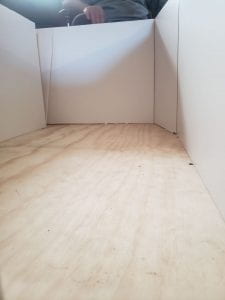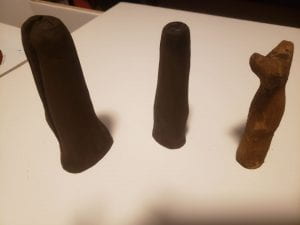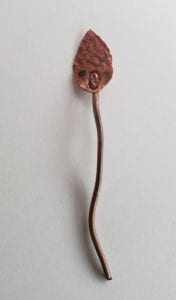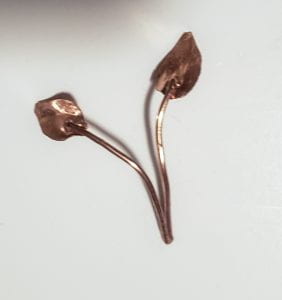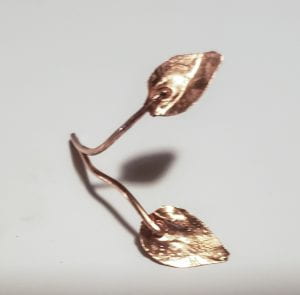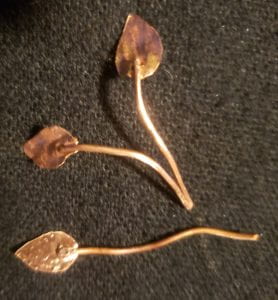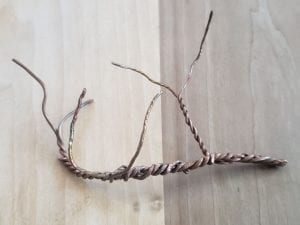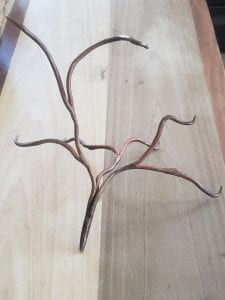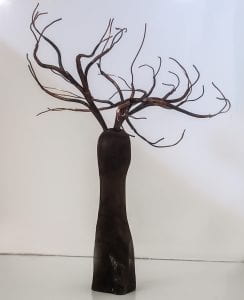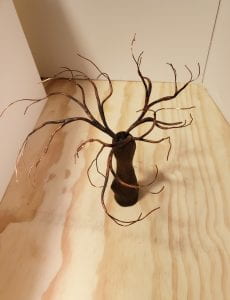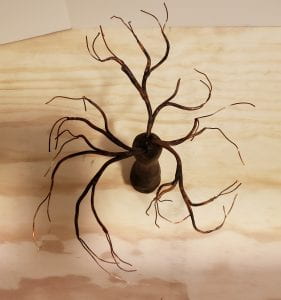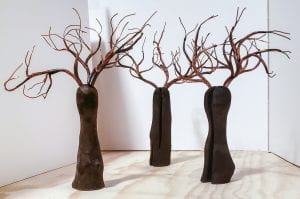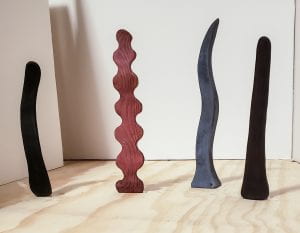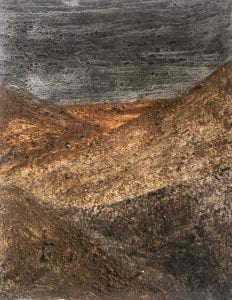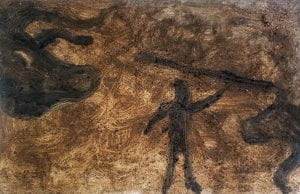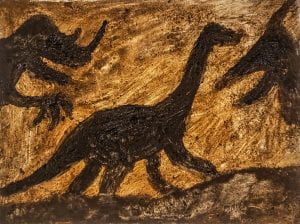Hi, Everyone! Welcome! Here’s what I’m working on at the moment. I built a scale model (1-inch to 12-inches)of the Doran Gallery, located at MassArt. The model is made of plywood with foam core sheets cut to fit for walls. It’s a work in-progress; I still have to finish fitting the foam core and finish the flooring to be an exact replica. Once everyone is able to be on campus, I would be very pleased to share this with any of you who would like to try a sample showing of your work.
Here are the beginnings of tree trunk forms in miniature. I made these from raw mulberry wood I found at the Greenfield, Massachusetts Transfer Station.
I experimented with painting the tree trunks with iron oxide with gum arabic. It was Fred Flinstone’s recipe for paint. Two of the three tree trunks in the following photo I charred and painted with iron oxide, and the third one (farthest to the right), I didn’t char and I ONLY added the iron oxide. I created the iron oxide by hand from a piece of bog iron ore. I hammered a chunk of the bog iron on the indented side of my swage block like using a mortar and pestle. Then, I put the rough powder into a thick piece of leather folded over it, and I hammered that until a fine powder. I brushed the iron oxide and gum arabic compound onto the tree trunks.
I textured a small sheet of copper foil on a rough piece of steel with the peen side of my cross peen hammer, and then I cut them into teardrop shapes. They’re not botanically correct Baobab tree leaves. It would have been too difficult to cut a Baobab leaf at such a small size. I punched a hole at the bottom of the leaf and I folded and crimped a 1/16-inch copper wire in place. Here’s a ½-inch leaf:
I made branch forms from annealed copper wiring; some twisted and some hand forged. Here are the examples of the branch form models in different arrangements:
Here’s a sample semi-completed model in progress: The tree trunk was charred with my oxy-acetylene torch, and then I used the scrubby side of a sponge to scrub off the soot with water. I welded the branches together and I inserted them into drilled holes at the top of the trunk.
These are Herrors and Occs; they’re a second concept: These models are made of wood. The Herrors (the dark straight forms) are charred and wiped with black acrylic paint to appear as I saw them in my childhood memory. The reddish Occ is charred and rubbed with an acrylic pink hue wiped onto it. The reddish Occ would sometimes appear in the same color as the Herrors; dark brown or black. The gray Occ is carved and sanded wood with gray acrylic paint, brushed and wiped on. The texture of the gray Occ, from what I recall from my childhood, was likened to a human tongue; rough and textured. I purposefully made this gray Occ model with the same texture. These were representations of my childhood visions or you may say, apparitions, and they appeared in the dark in my bedroom and in my dreams. I learned from a friend and mentor; according to him, these apparitions exist in other dimensions seen by people with the use of hallucinogens. These apparitions would move towards me in a gliding fashion at a slant trying to take my energy. If these are to be included in a show, they’d be made of 2″ x 4″ fir wood to 2″ x 12″ fir wood, 4- to 10- feet tall, averaging at 6- to 8-feet tall. In the gallery space, they would be free-standing, and the stands would be made of flat wood or steel, and they would incorporate the shadows that they created from my childhood.
Here are some of my paintings, which are my third concept: These were paintings I created with pigments from bog iron ore, crushed charcoal, crushed soapstone and iron slag mixed with Gum Arabic and Borax. The surface of these paintings are very textured and add to its depth. The paintings, included here, would be exhibited on the walls of the gallery with the Baobab trees. It would give context to the Baobab trees, since the trees are ancient, with some as old as 6,000 years.

